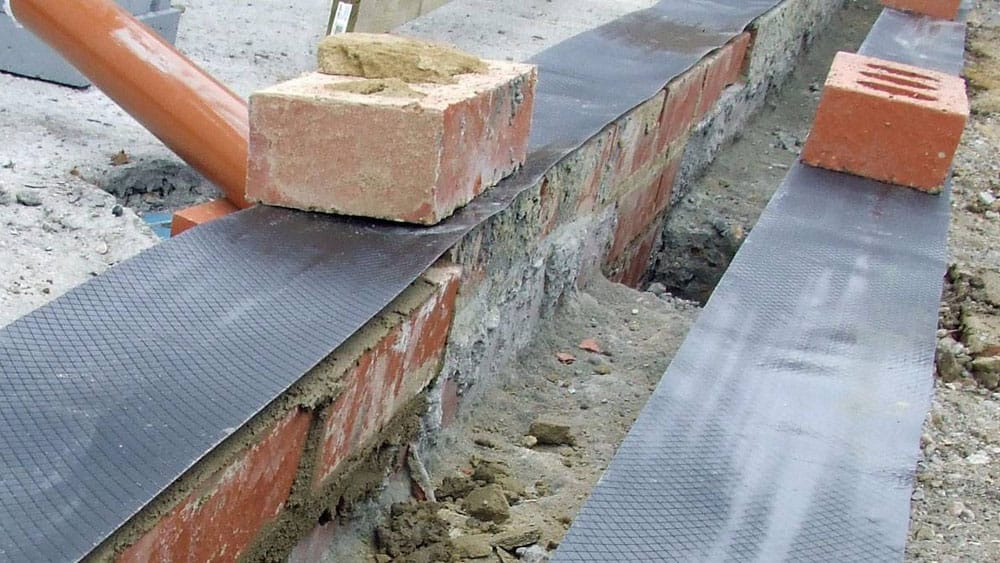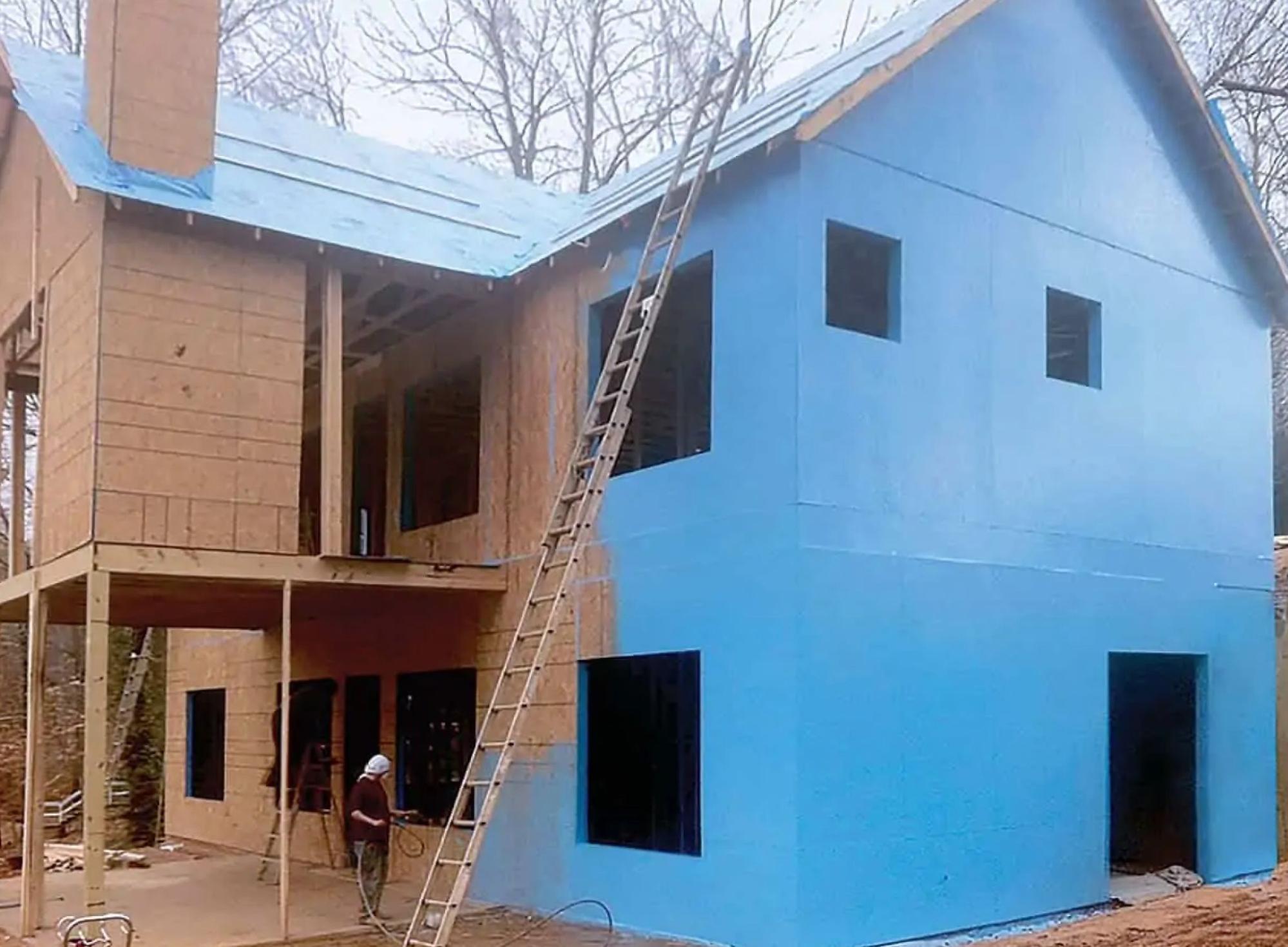Seven key methods for mould removal newcastle that deliver results
Seven key methods for mould removal newcastle that deliver results
Blog Article
Discovering the Different Methods and Solutions for Effective Damp Proofing
Moisture in structures presents substantial obstacles to both structural stability and interior air top quality. Numerous strategies and options have arised to combat this prevalent problem. From typical damp-proof membranes to cutting-edge chemical therapies, each technique provides distinct advantages. Comprehending these choices is vital for efficient dampness control. Selecting the ideal remedy depends on specific structure conditions and needs, motivating further expedition right into the most efficient wet proofing methods offered.
Comprehending the Reasons For Wetness
Although dampness can arise from different sources, understanding these reasons is essential for reliable remediation. Generally, wetness originates from three primary resources: increasing damp, passing through moist, and condensation. Increasing damp happens when groundwater travels up-wards via permeable materials, such as brick or rock, frequently due to an absence of a reliable obstacle (damp proofing newcastle). Penetrating damp is typically triggered by external aspects, consisting of roofing leaks, malfunctioning rain gutters, or harmed wall surfaces, enabling water to penetrate a building. Condensation, on the various other hand, arises from excess dampness in the air, often worsened by inadequate ventilation and temperature differences, causing water droplets basing on surfaces. Identifying these underlying problems is necessary, as each sort of moisture needs a customized method for remediation. Appropriate assessment aids in establishing one of the most effective options, ultimately guarding the architectural integrity of a building and boosting interior air quality
Standard Damp-Proof Membrane Layers

Chemical Damp-Proofing Solutions
Chemical damp-proofing solutions supply an innovative strategy to stopping dampness breach in structures. These approaches commonly involve the application of liquid chemicals that permeate masonry and form a barrier versus climbing damp. Generally used chemicals consist of silanes, siloxanes, and various other water-repellent representatives that react with surface products to develop a hydrophobic layer.The application process generally calls for exploration holes right into the wall surfaces, injecting the chemical remedy, and enabling it to treat. This approach is especially helpful for older structures where conventional damp-proof membrane layers may be unwise. Furthermore, chemical damp-proofing can be much less turbulent and a lot more cost-effective than comprehensive renovation projects.While effective, these options depend upon proper application and ecological problems for peak performance. Regular upkeep and surveillance are important to ensure the longevity of the damp-proofing therapy. In general, chemical damp-proofing represents a flexible choice for protecting buildings against moisture-related damages
Tooth Cavity Wall Building Methods
Cavity wall surface building and construction methods supply various advantages, particularly in wetness control and energy performance. By including an air space between two layers of masonry, these walls properly reduce water access while enhancing insulation. This mix not only protects frameworks from dampness however additionally contributes to lowered power consumption.
Benefits of Tooth Cavity Wall Surfaces
When thinking about effective wet proofing methods, the advantages of tooth cavity walls stick out plainly. Tooth cavity walls contain two different layers, producing an air space that effectively decreases moisture infiltration. This layout decreases the threat of moisture, as the outer wall acts as an obstacle versus rainfall and water access. Furthermore, tooth cavity wall surfaces improve thermal insulation, which adds to energy effectiveness by minimizing warmth loss. They also supply sound insulation, assisting to create a quieter interior setting. The air space enables for air flow, which helps in dampness control and minimizes the possibility of mold and mildew development. These advantages not just boost the general convenience of a structure however also contribute to its longevity and structural honesty.
Moisture Control Approaches
Effective wetness control methods are essential in tooth cavity wall construction to ensure long-term defense versus dampness. One key method involves the incorporation of weep holes, which assist in water drainage from the cavity, avoiding build-up. Furthermore, making use of breathable membranes can assist handle wetness degrees while permitting entraped vapor to leave. Appropriate positioning of insulation is additionally essential, as it needs to not block drainage paths. In addition, guaranteeing that the outer leaves of the dental caries wall are created with water-resistant products enhances general resilience. Regular maintenance checks are important to recognize any kind of blockages or damage early, guarding the framework's honesty. Inevitably, a mix of these techniques forms a robust protection against moisture invasion in dental caries wall surfaces.
Insulation and Energy Performance
Insulation plays a vital function in boosting power effectiveness within cavity wall building and construction. By integrating protecting products, these wall surfaces produce a thermal obstacle that minimizes warmth loss and decreases energy intake. Efficient insulation not only aids preserve a stable interior temperature however likewise minimizes the threat of wetness, as it prevents condensation within the wall surface cavity. Different strategies, such as the usage of inflexible foam boards or mineral wool, can be utilized to achieve ideal insulation efficiency. Furthermore, correct setup is important to guarantee that spaces and spaces are minimized, which can otherwise jeopardize power effectiveness. Inevitably, a well-insulated cavity wall contributes significantly to general sustainability and reduces heating & cooling prices for property owners.
External Damp Proofing Methods
External damp proofing methods are necessary for shielding frameworks from moisture seepage. Two reliable methods include the application of waterproof membranes and the installation of French drains pipes. These options aid mitigate water accumulation and maintain the stability of structures.
Waterproof Membrane Layer Application
While various methods exist for stopping dampness access, the application of water resistant membrane layers remains a highly reliable outside moist proofing technique. These membranes are generally made from products such as polyethylene, rubber, or customized asphalt, providing a durable obstacle against water infiltration. The installment procedure includes using the membrane layer to the external surfaces of walls or structures, guaranteeing total coverage to avoid leakages. Appropriate bond and securing at joints are crucial to making the most of effectiveness. Waterproof membranes can be applied in numerous forms, including fluid finishes and sheet membranes, enabling versatility based upon the particular demands of the structure. This approach not only shields buildings from wetness however additionally improves their long life and structural integrity.
French Drainpipe Setup
One efficient method for managing groundwater and avoiding dampness build-up around a structure's structure is the installation of a French drain. This water drainage system is composed of a trench full of gravel and a perforated pipeline that reroutes surface water far from the structure. Correct setup calls for mindful preparation, making certain that the drainpipe slopes away from the structure to help with perfect water circulation. In addition, the place of the drainpipe is essential; it must be placed in locations vulnerable to merging or excess dampness. Routine upkeep, including clearing debris from the gravel and ensuring the pipeline continues to be unblocked, is essential for lasting performance. Ultimately, a well-installed French drainpipe can considerably minimize the threat of water-related issues in cellars and foundations.
Inside Waterproofing Methods
Interior waterproofing strategies are crucial for shielding a building's interior from moisture infiltration and possible water damage. These strategies typically involve the application of specialized products and techniques made to develop a moisture obstacle within the framework. One common strategy is the usage of water-proof finishings or sealers on wall surfaces and floorings, which avoid moisture from permeating surfaces.Additionally, mounting interior water drainage systems, such as sump pumps, can efficiently manage water buildup in basements and crawl rooms. An additional technique entails using vapor obstacles, which are installed to hinder moisture movement from the ground right into living spaces.Moreover, dealing with any cracks or voids in wall surfaces or structures with proper sealers assures a complete defense versus water intrusion. By executing these indoor waterproofing approaches, homeowner can considerably reduce the threat of mold growth, architectural damage, and other moisture-related concerns. Proper execution of these techniques is necessary for long-lasting defense and building honesty.
Routine Upkeep and Assessment Practices
Regular upkeep and assessment methods are crucial for ensuring the lasting performance of moist proofing remedies in any building. Regular checks enable residential or commercial property owners to identify very early signs of dampness breach, such as peeling paint, mold and mildew growth, and mildewy smells. These indications can signify underlying problems that require instant attention.Inspections must be carried out a minimum of yearly, concentrating on prone locations like basements, crawl areas, and exterior wall surfaces. Throughout these evaluations, homeowner ought to analyze sealers, water drainage systems, and ventilation to validate they work correctly.Additionally, maintaining downspouts and seamless gutters is important, as blocked systems can lead to water accumulation near the foundation. Executing a routine maintenance schedule, together with timely fixings, can considerably prolong the life expectancy of moist proofing steps and protect the structural stability of the building. Aggressive procedures inevitably add to the overall wellness and safety of the living environment.
Regularly Asked Questions
Just How Long Does Damp Proofing Typically Last?
The period of wet proofing efficiency varies, typically lasting between 20 to half a century. Elements such as application quality, environmental problems, and upkeep methods considerably influence the durability of the moist proofing treatment.

Can I Damp Proof My Home Myself?
The private pondered the feasibility of do it yourself damp proofing. With correct study and the ideal materials, it is feasible. However, they also acknowledged the significance of expert advice to guarantee lasting effectiveness and prevent future issues.
What Are the Indications of Inadequate Damp Proofing?
Indicators of inefficient wet proofing include relentless stuffy odors, noticeable mold and mildew growth, peeling off paint, read more wet patches on walls, and timber degeneration - damp specialist newcastle. Home owners must attend to these issues without delay to stop more damages and health and wellness issues
Does Damp Proofing Affect Indoor Air Quality?

Just How Much Does Expert Damp Proofing Price?
Expert damp proofing prices differ significantly, usually varying from $1,000 to $5,000 depending upon the residential property's dimension, the degree of the damp concern, and picked techniques. Each scenario needs a tailored assessment for exact pricing. Commonly, dampness originates from three primary sources: climbing wet, passing through moist, and condensation. When considering effective damp proofing methods, the advantages of cavity wall surfaces stand out plainly. Outside damp proofing approaches are essential for safeguarding structures from moisture infiltration. While different methods exist for avoiding moisture ingress, the application of water-proof membrane layers continues to be a highly effective exterior wet proofing technique. Indicators of inefficient damp proofing consist of consistent stuffy smells, visible mold growth, peeling off paint, damp spots on walls, and timber decay.
Report this page